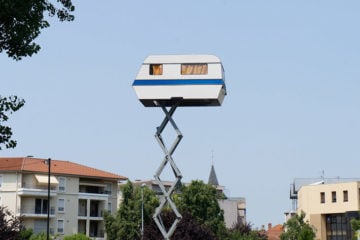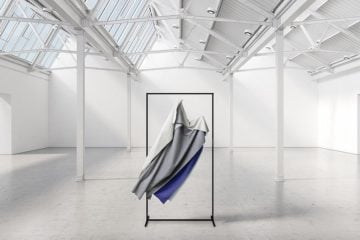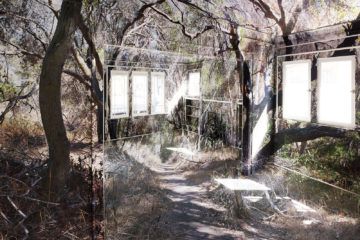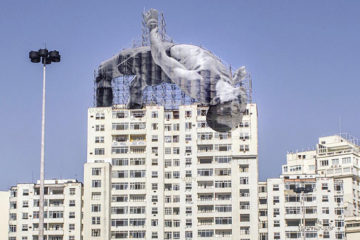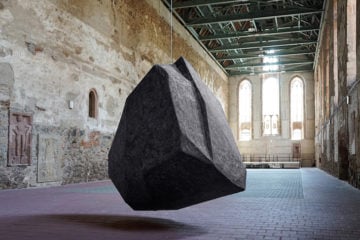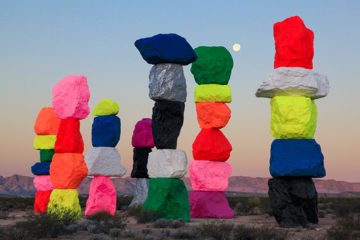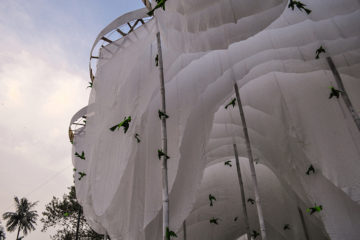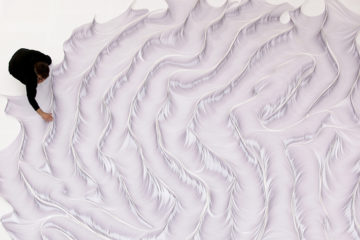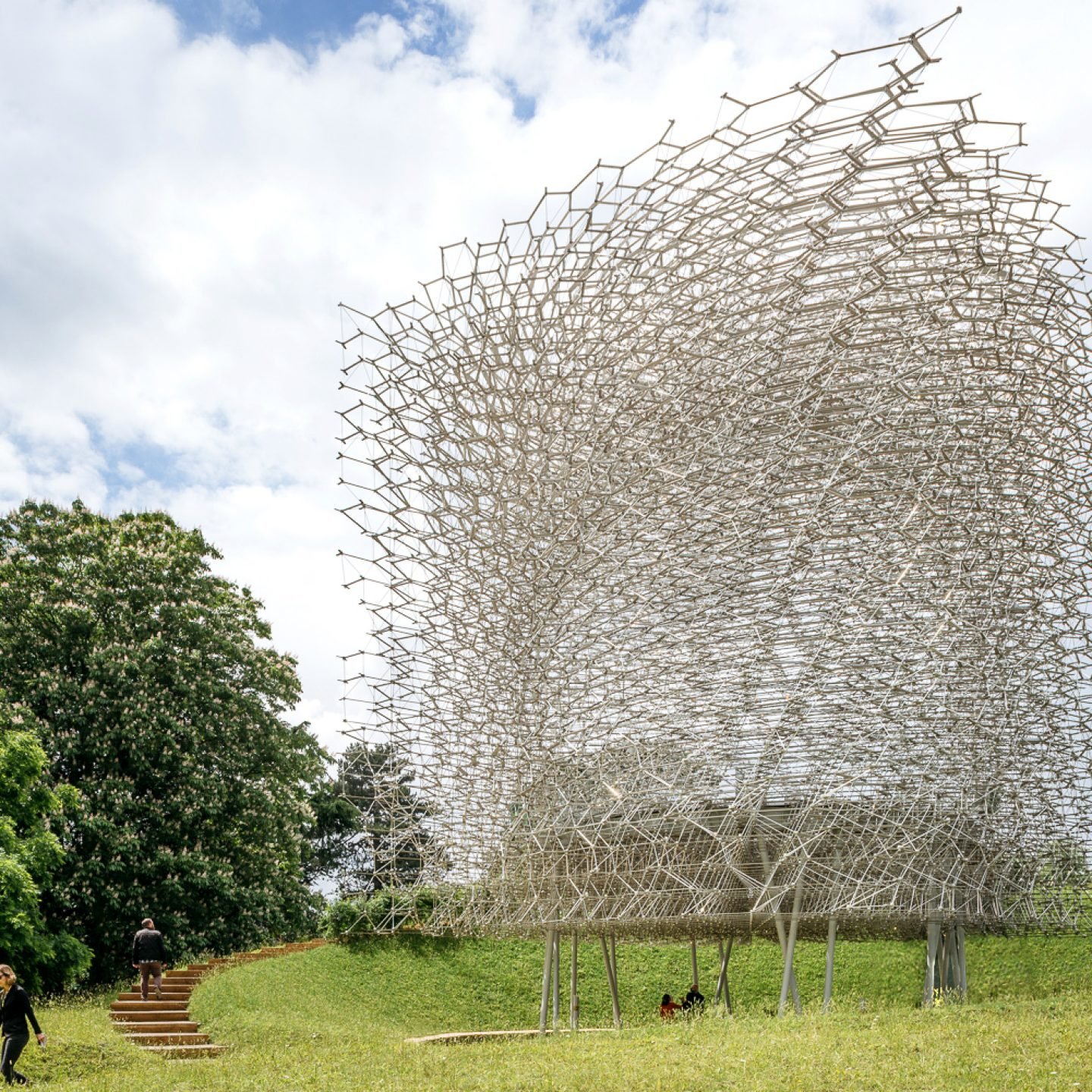
A Pavilion Reminiscent Of A Bee Swarm
- Words
- Monika Mróz
Last month marked the relocation of an award-winning sculpture, ‘The Hive’ to Kew Gardens in London. The sculpture, designed by an artist Wolfgang Buttress, previously took centre stage as a part of the British Pavilion for the last year’s World Expo in Milan.
The Hive represents the intrinsic and important relationship between bee and human, bringing together art, science, sound and landscape. Born from the concept of having a ‘second life’, ‘The Hive’ was the first UK pavilion to return from a World Expo for the British public to experience and enjoy. For over a six month period in Milan, it attracted over 3.3 millions visitors and became one of the main attractions. Responding to the Expo theme ‘Feeding the Planet Energy for Life’, the Pavilion highlights the decline of honey bee populations and importance of pollination in our food chain.
Reminiscent of a honeycomb, it suggests a swarm of bees with its dynamic form and rotational twist. Additionally, it features vibration sensors that are used to measure the activity of a real bee colony living at Kew Gardens. The signal is then converted into light signals which lightens 1000 LED luminaries which line the interior of The Hive. Together with a soundscape based upon pre-recorded bee sounds, these effects convey a sensual representation of the state of the bee colony. The Hive represents the intrinsic and important relationship between bee and human bringing together art, science, sound and landscape through an immersive and multi-sensory experience.
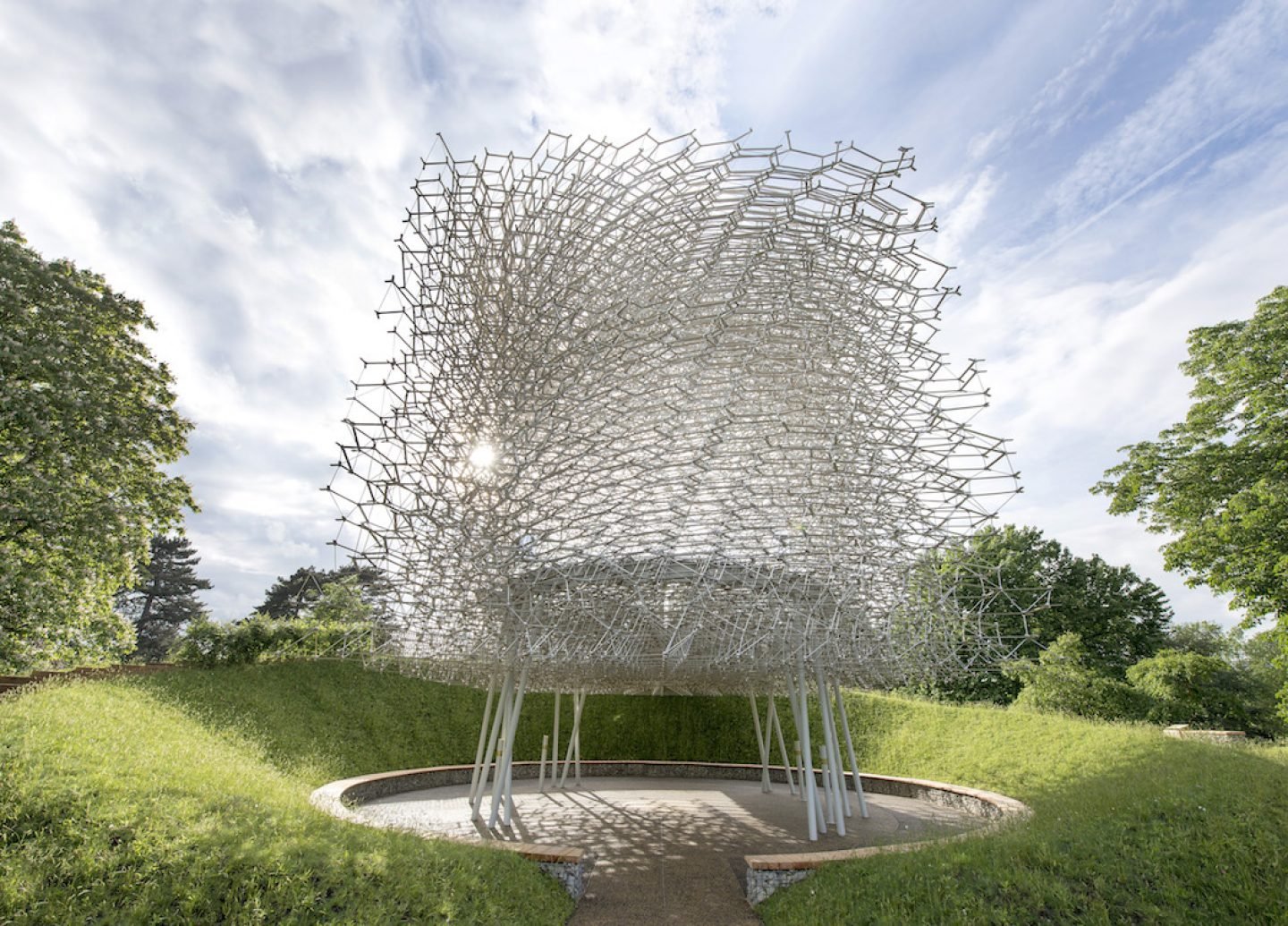
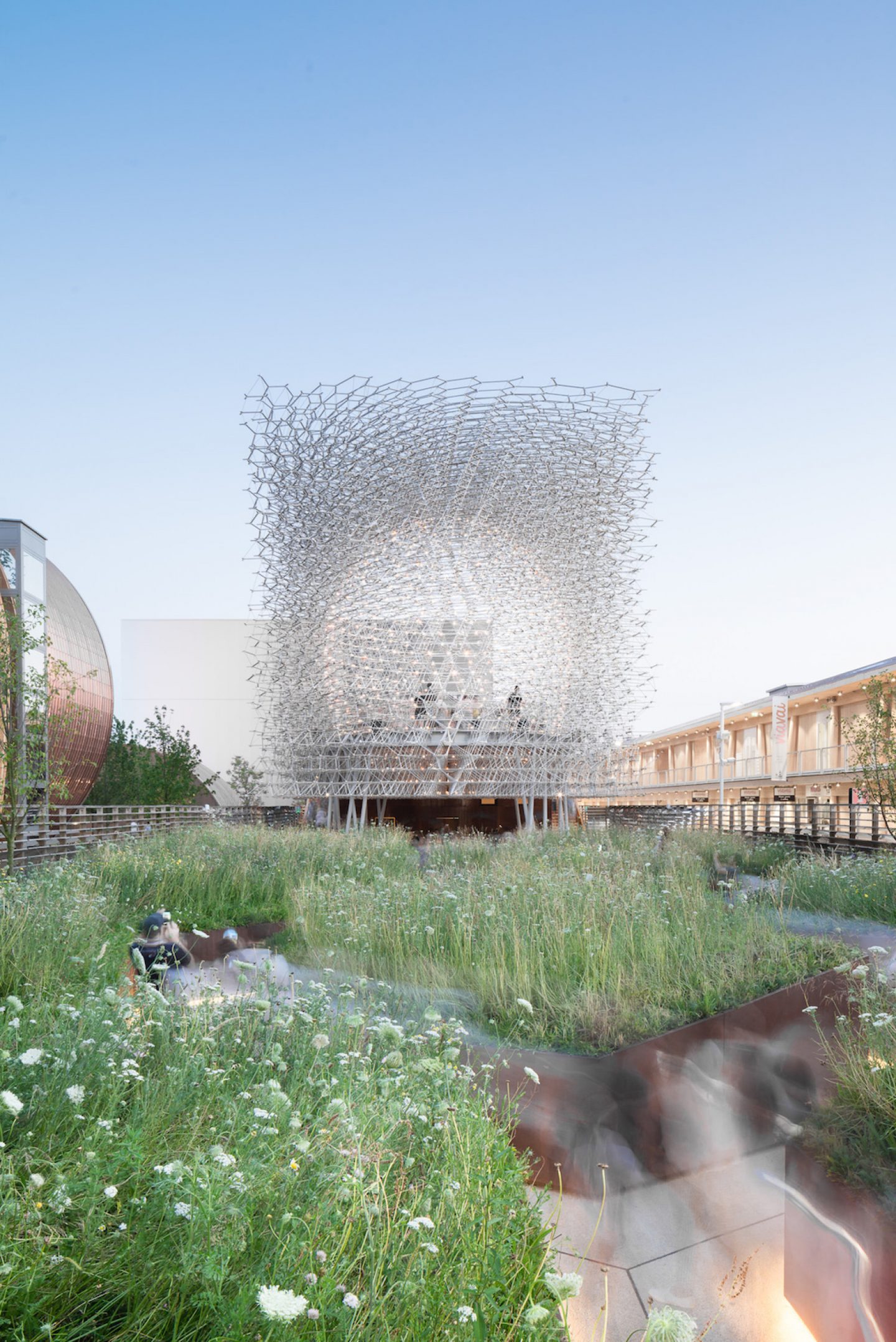
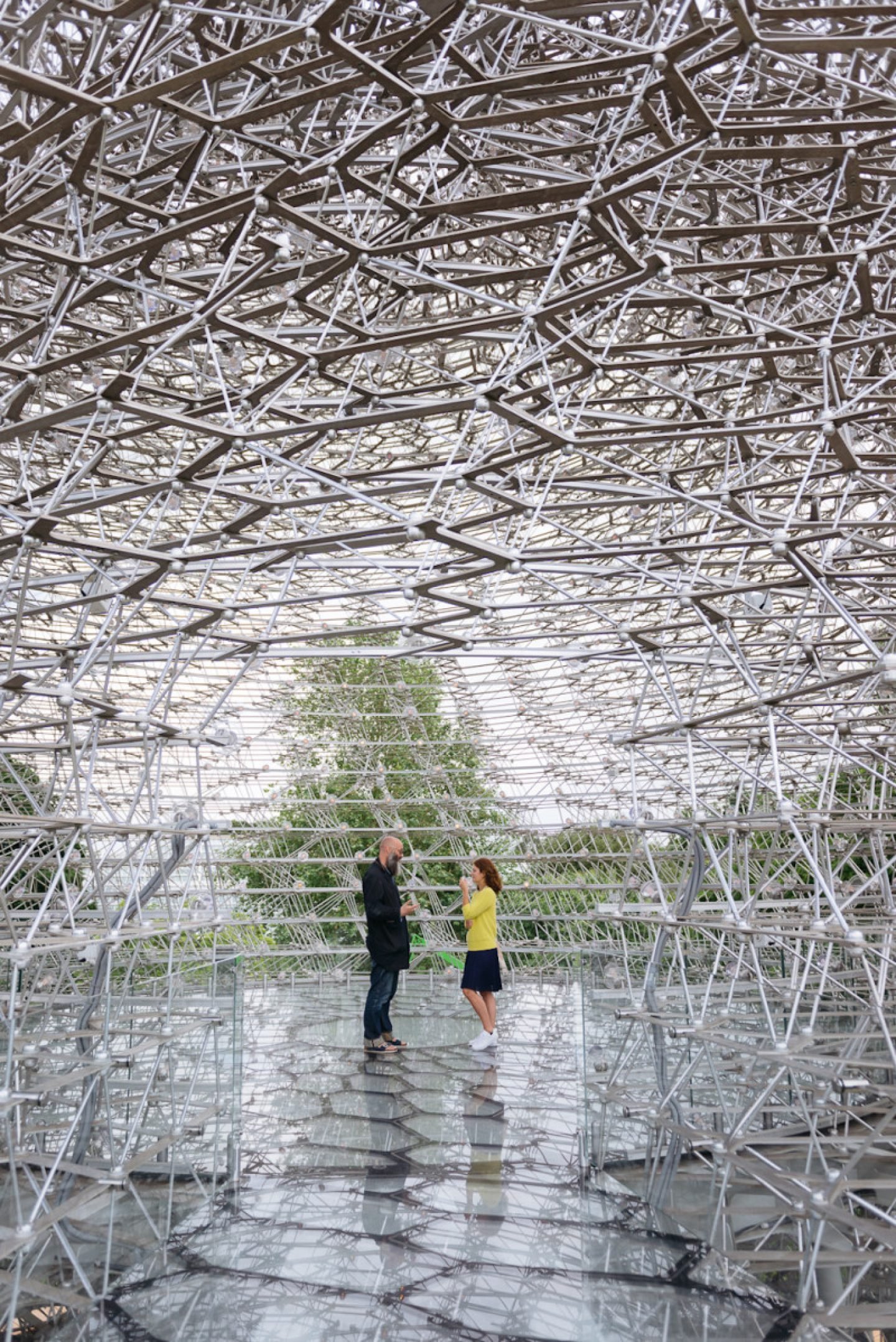
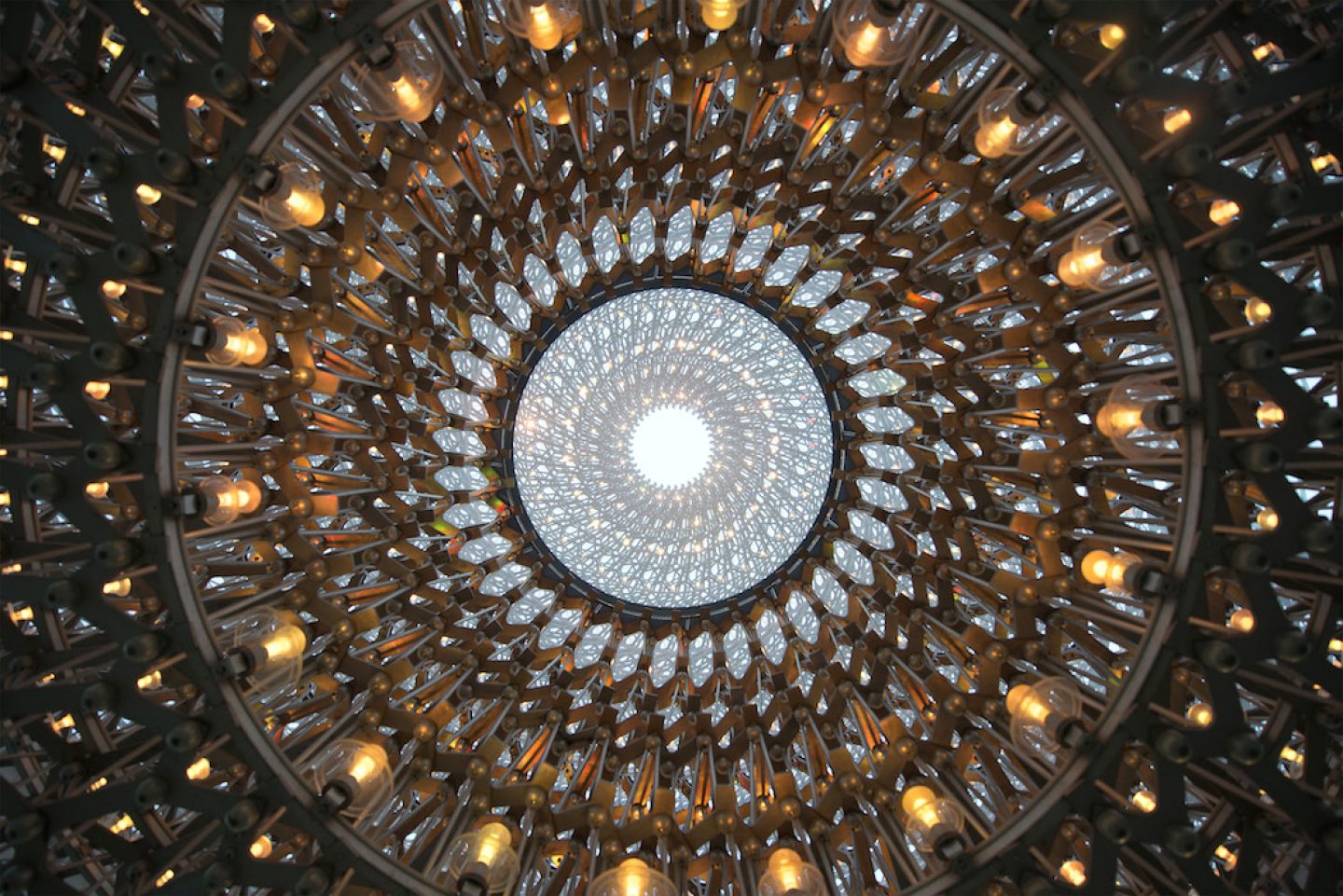
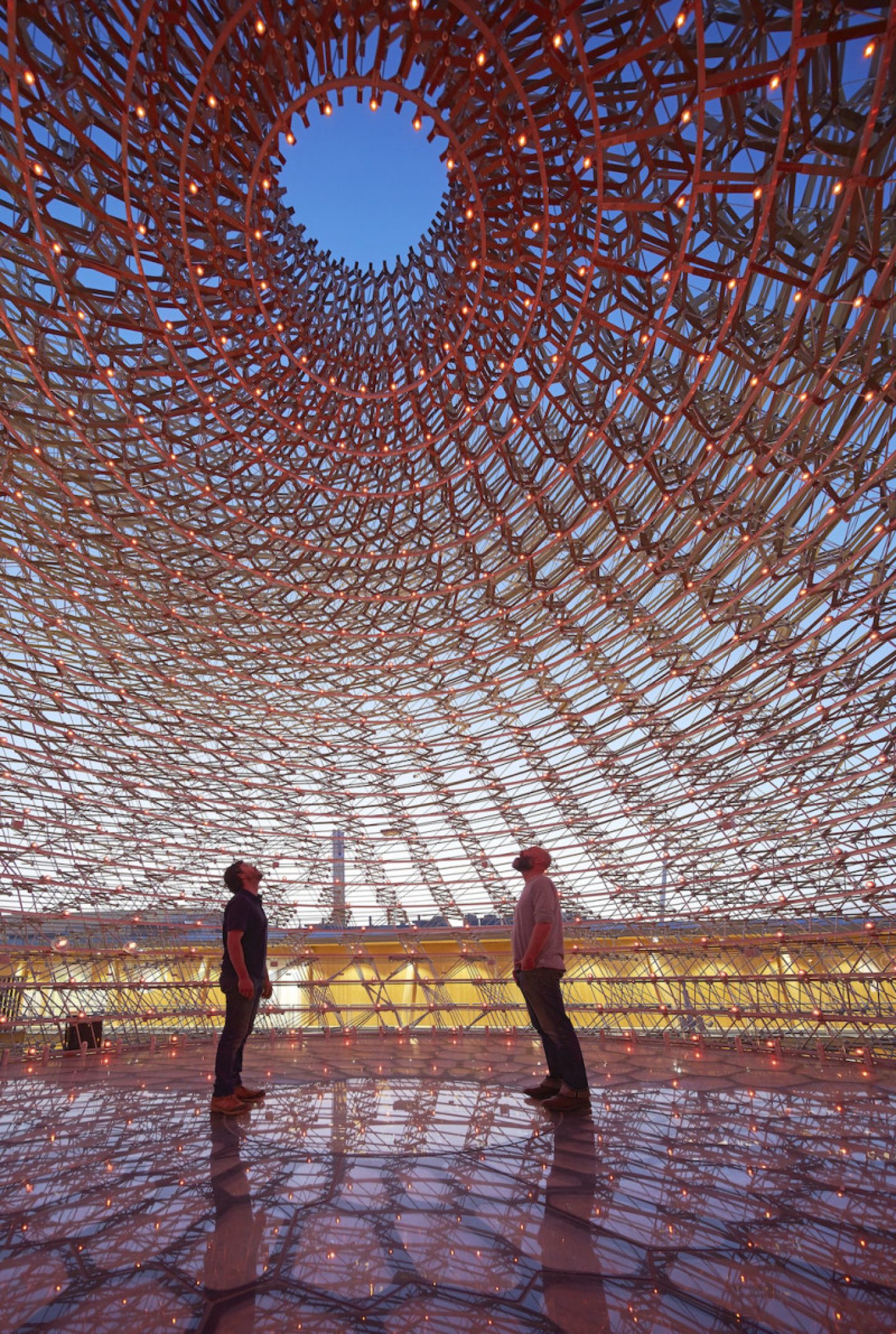
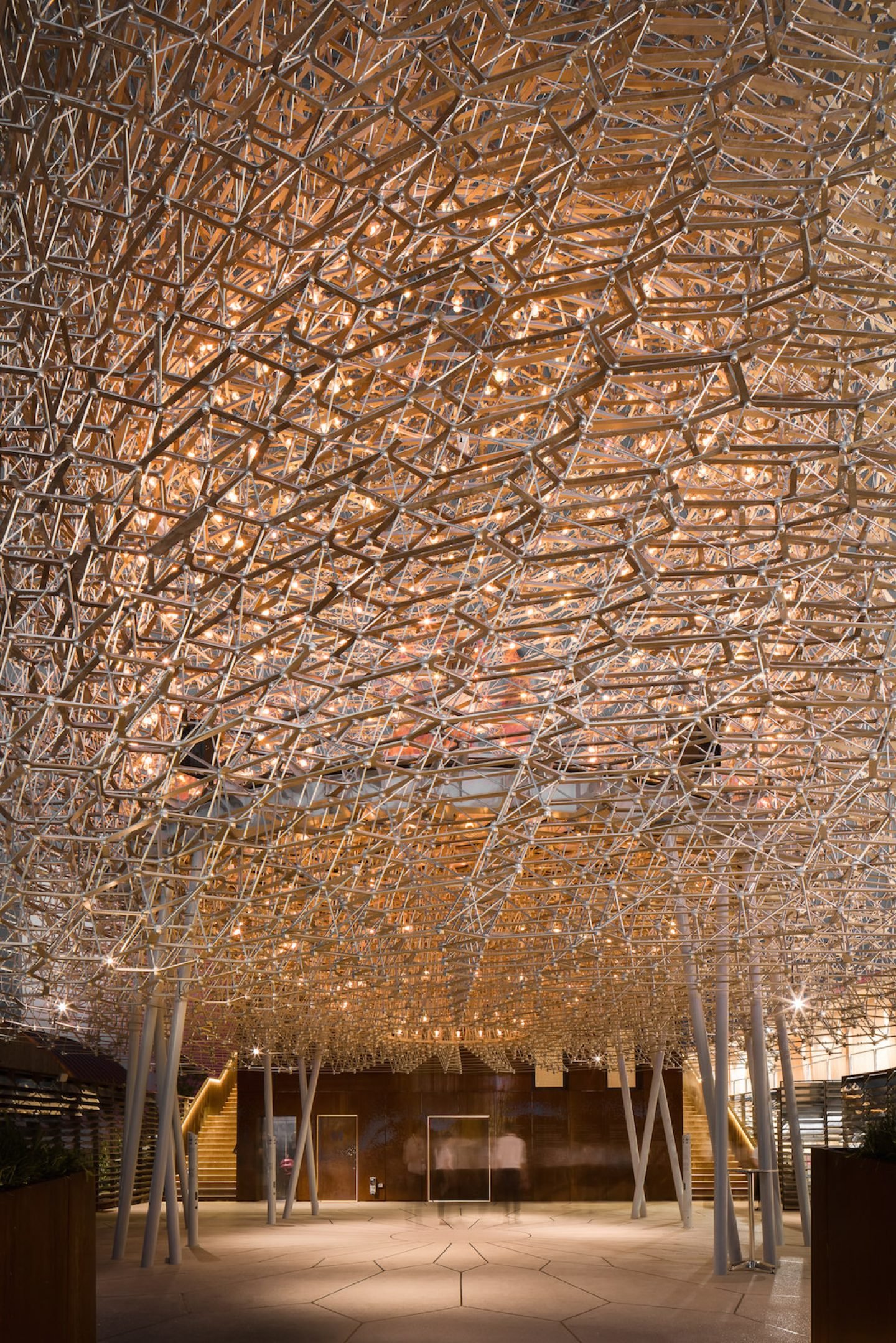
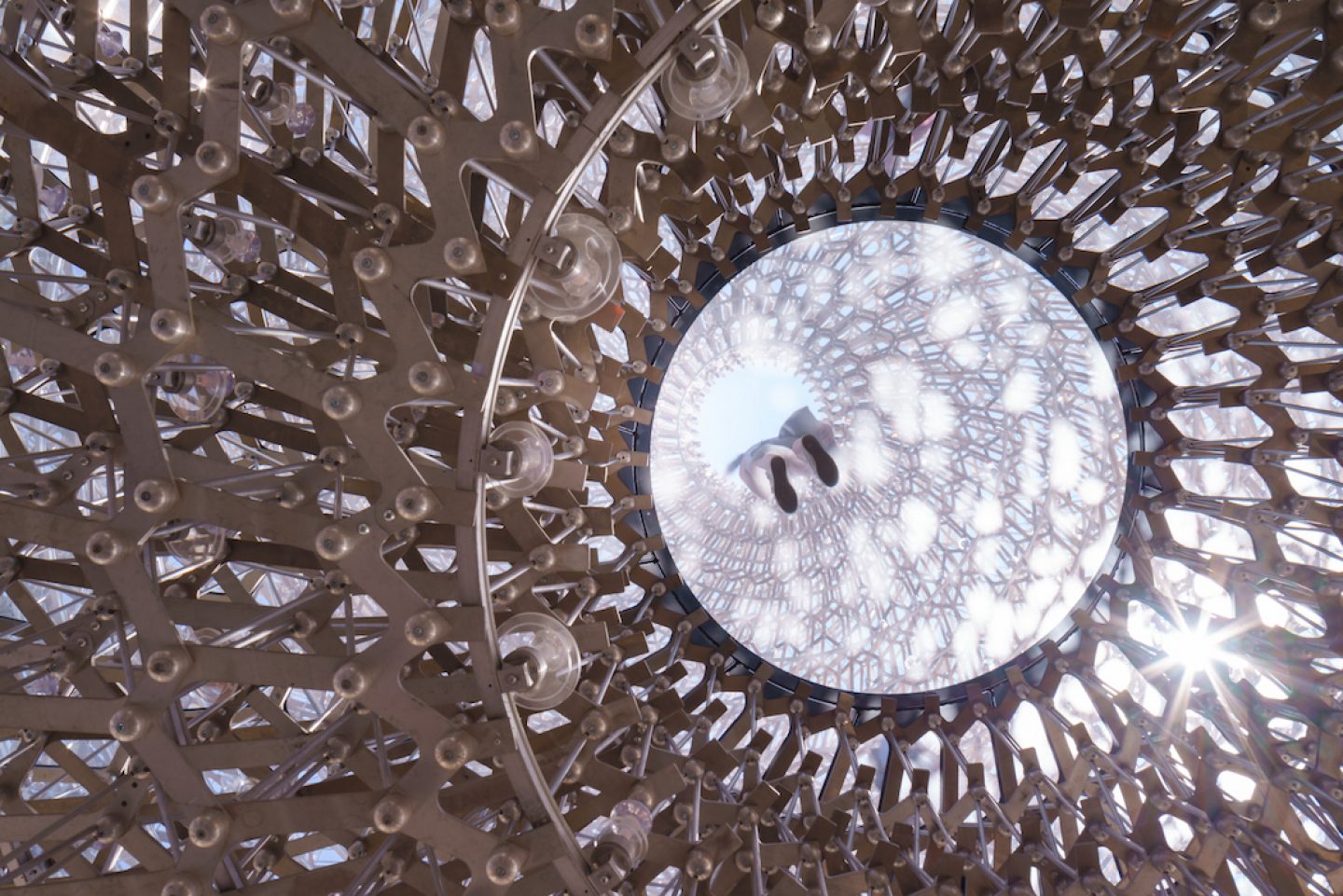
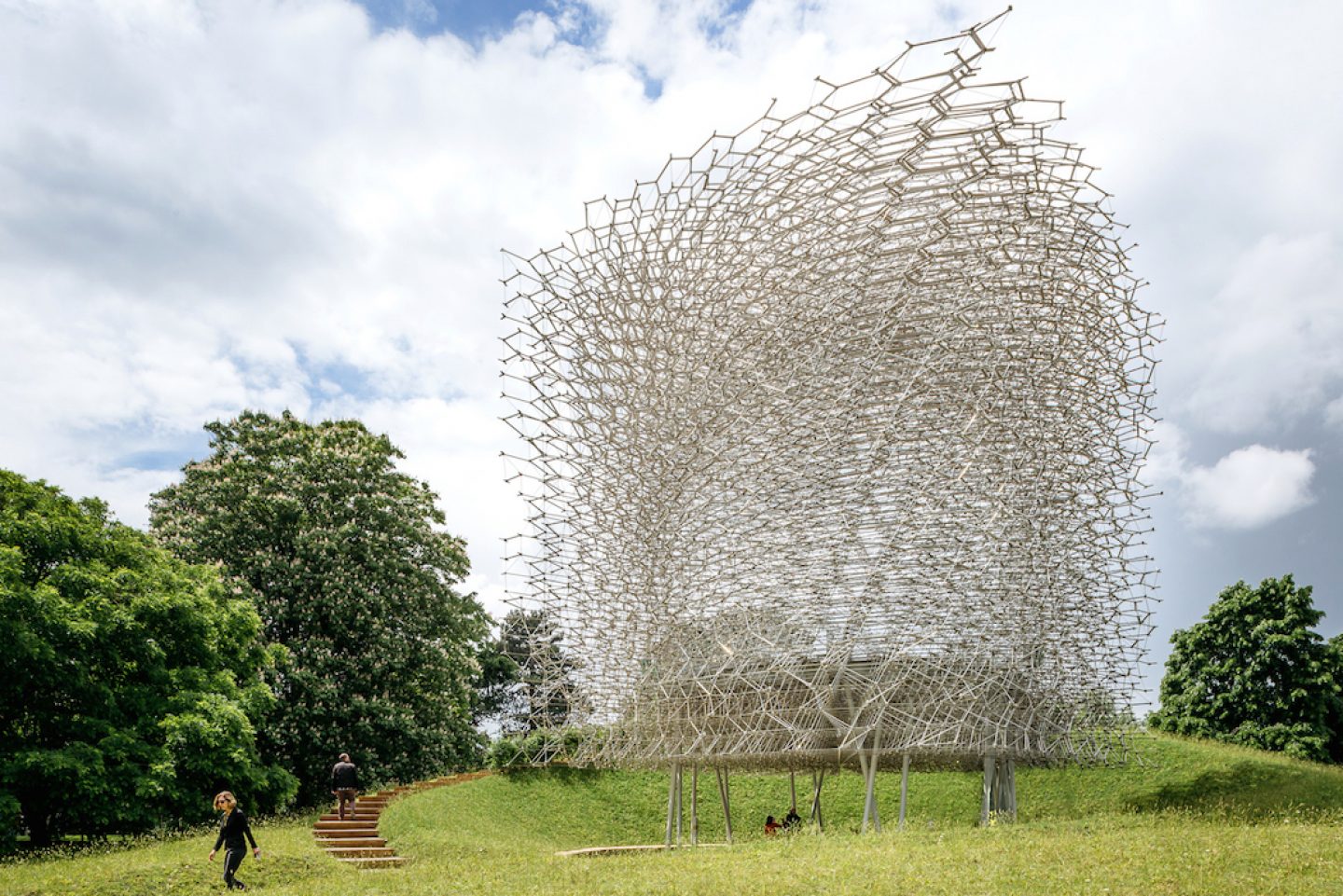
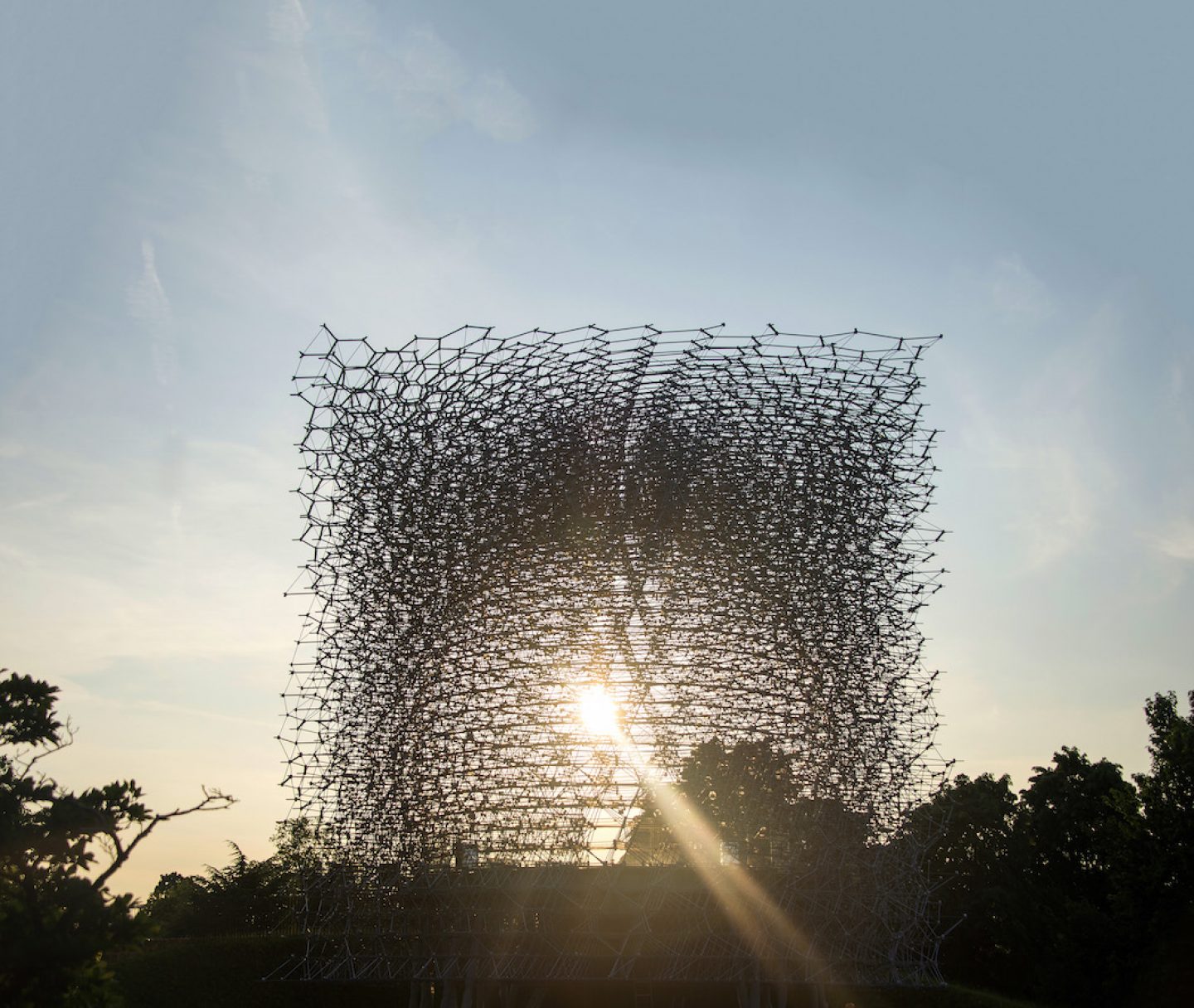
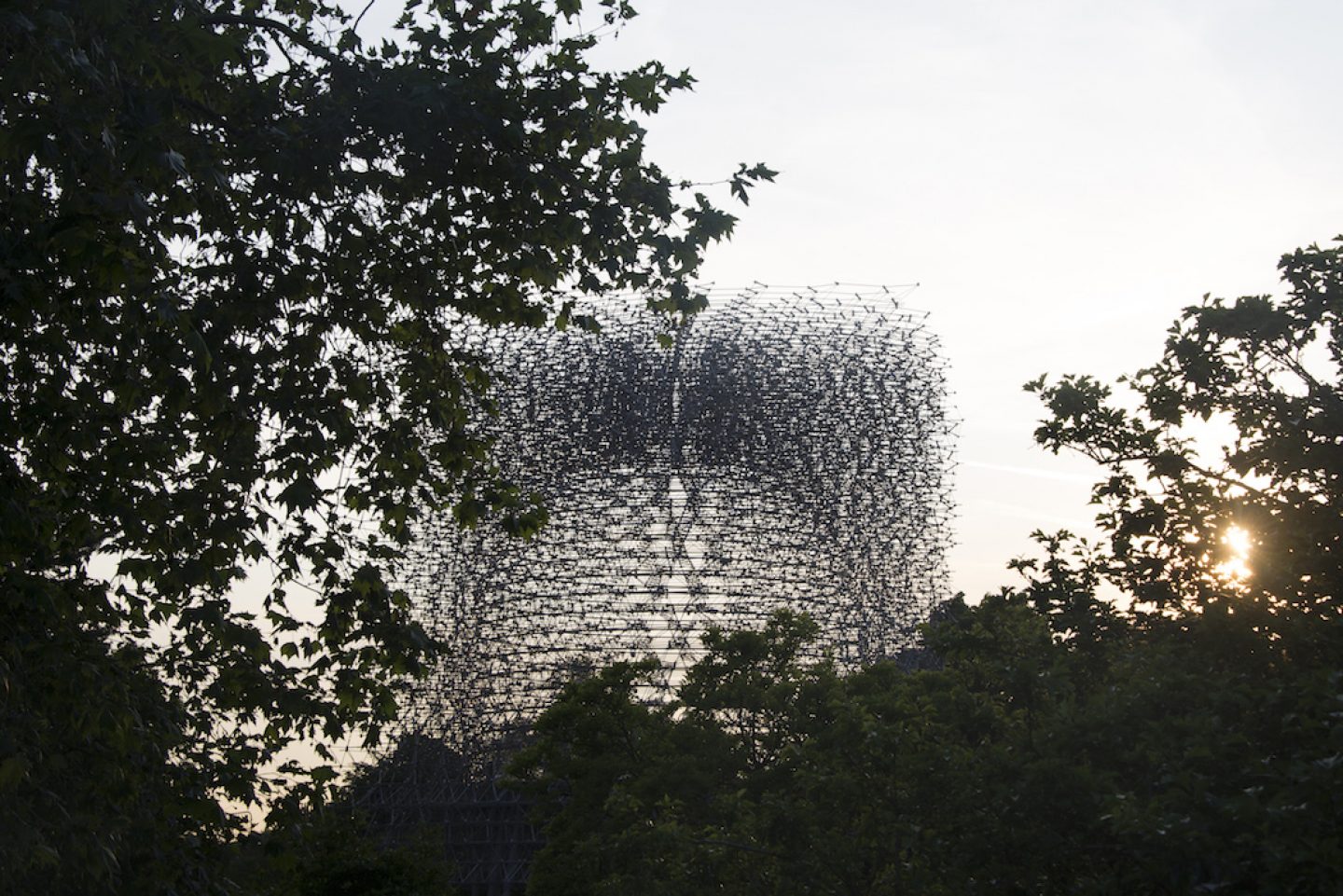
All images © Dacian Groza / Mark Hadden / Hufton+Crow / Jeff Eden
